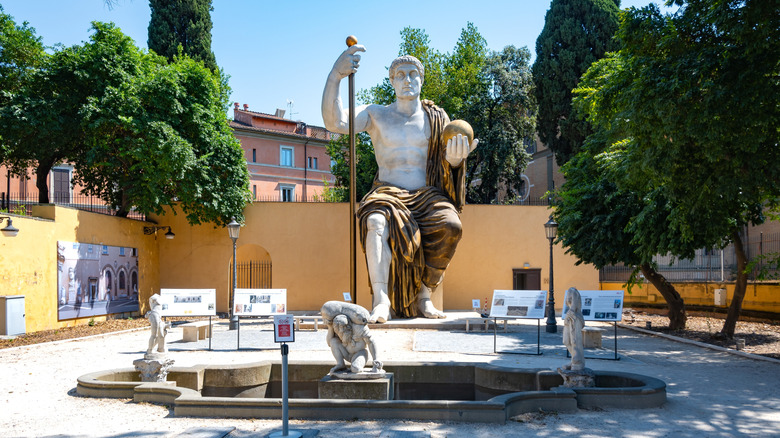Located In One Of Rome's Capitoline Museums Is A Recently Reconstructed Famous Piece Of Art
If you are planning a short visit to the capital of Italy, there are things you should do with only one day in Rome. Of course, there are lots of places to eat and shop, but you wouldn't want to miss some of the most famous attractions like the Colosseum, the Trevi Fountain, and the Roman Forum. While all of those places are great for first-timers in the Eternal City, don't forget the lesser-known interesting sites nearby, like the Capitoline Museums, which is believed to be the world's oldest. At this site, you can see a reconstructed piece of art that likely hasn't been seen intact since the days of ancient Rome: the Colossus of Constantine.
The original colossal statue was commissioned by the Roman Emperor Constantine back in the 4th century, making the ruler appear as Jupiter, the king of the Roman gods. As the centuries passed, the statue was broken down and used for its bronze. It wasn't until the 15th century that several fragments were unearthed and later placed inside the Palazzo dei Conservatori (which is now part of the Capitoline Museums) by the famed artist Michaelangelo.
A total of 10 fragments found over the following centuries were used to create a 3D rendering of the full statue by Irene Gaumé in collaboration with a team of experts at the museum in 2022. The statue was recreated using resin, polyurethane, plaster, marble powder, and gold leaf to make it look like the original marble and bronze statue. The finished work measures about 42 feet tall and has been on display to the public since February 2024.
The Colossus of Constantine is located in a convenient and lively part of Rome
Visitors can find some of the fragments of the original statue as well as the recreation in Villa Caffarelli in the Capitoline Museums. If you love ancient Roman history, the Capitoline Museums are a must-visit. They are home to many important artifacts from Rome's past that you can't find anywhere else, including collections of artwork from prominent ancient families and the Marforio statue (famous for being a "talking statue" because it was used to express satirical or political commentary). The Colossus of Constantine may not talk, but it is one of many important works in the museum.
Outside of the Capitoline Museums, visitors can find themselves in the heart of the city and close to other major attractions. A quick 15-minute walk east will take you to the Colosseum and the Roman Forum. The Trevi Fountain is also a convenient 15-minute walk north of the Capitoline Museums. This area is also rich with other attractions like the Campo de Fiori, Piazza Navona, and the Basilica Papale di Santa Maria Maggiore. All of these attractions are close to the chic Monti and Trastevere neighborhoods, where you can find tons of shopping and dining options. You could also head to a romantic garden oasis hidden in Rome's city center and dubbed "Paradise On Earth."

